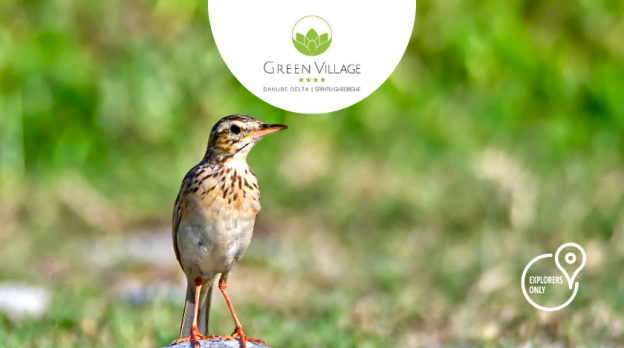In winter, in the Danube Delta and in your city, there are dozens of bird species for which finding food sources can be a challenge. Bare trees, low numbers of insects and a lack of seeds are some of the reasons why we encourage you to help the birds in your community.
What type of food can we give the birds?
Birds will be very happy to find seeds: sunflower seeds, without salt, not roasted or heat treated, are very appreciated – you can leave them with the skin on, the birds are experienced and know how to peel them, especially the chickadees; those of cantaloupe and hemp are also very nutritious. Milk, rice, rolled oats for poultry, potato skins or boiled vegetables, fruits (nuts, raisins, berries) are a welcome option.

What not to give the birds food (neither in winter nor in any other season)?
Bread and all bakery products are very harmful to birds (yeast can cause them various gastric diseases). Salty food is also to be avoided. Likewise, we don’t recommend feeding your birds cat or dog food.
Where can we place the food?
You can make feeders that you can periodically feed with seeds and food suitable for birds. The feeders will be placed in hard-to-reach areas for predators: in trees, suspended in the balcony, etc. It is advisable not to leave food on the ground (especially in the yard) for two reasons: the food can attract rodents and predatory animals that can hunt the birds.
Regularly supply the feeders with water and food, and the birds in the neighborhood will visit you regularly. Feeding is recommended to be done in the evening, because the birds will come early in the morning to eat.
If you live in an apartment building, you can set up small feeders on the windowsill (for apartments located on floors 1-5. Birds will not climb above the 5th floor).

How can you make a feeder?
Even a cut and suspended PET container can be an effective feeder. Feeders can be made from PETs, bird boxes or even mini houses, built from pieces of wood, slats and plywood. Cantaloupes or pumpkins are a good option for a feeder.
To prevent the birds from getting sick, it is important that these feeders are always sanitized and cleaned, as well as the place where they are placed.
What birds can you see at the feeders?
Pipits will be very happy to find the seeds in the feeders: Great Pipit (Parus major), Blue Pipit (Parus caeruleus), Sour Pipit (Parus palustris), Spruce Pipit (Periparus ater). At the feeders you will have the chance to see finch (Fringilla coelebs), winter finch (Fringilla montifringilla), ruffed grouse (Turdus pilaris), woodpecker (Dendrocopos syriacus), titmouse (Sitta europea), stilts (Carduelis carduelis), (Carduelis spinus), yellow warbler (Emberiza citrinella), grosbeak (Coccothraustes coccothraustes), blackbird (Turdus merula), woodcock (Turdus pilaris), woodpecker (Erithacus rubecula), sparrows (Passer domesticus).
When can we use the feeders?
Feeding can start in November until the end of March. In the spring food sources multiply and bird visits will be less and less frequent. Consistency is more important than quantity. Thus, it is very important that there are always seeds in the feeders. The birds will get used to coming directly to the feeders and will stop foraging on their own.
This winter, come to the aid of the winged beauties and provide them with a variety of seeds and fruits to enjoy every day!













